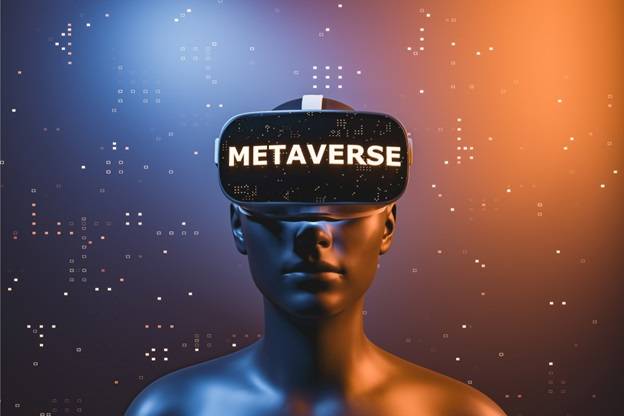If you’ve heard of Web 3.0, you might be wondering what it is and why we need it. You may have also heard about Metaverse and want to know more about this innovative project in the blockchain space.
In this article, we will explain what Web 3.0 is, why we need it and how metaverse can provide solutions for problems faced by current blockchains such as scalability issues and high transaction fees. We will also discuss how non-fungible tokens (NFTs) can be used to create unique digital assets on the blockchain with their own unique attributes which cannot be replicated or reproduced exactly in any way because they are not like regular digital assets which can be copied easily (also known as fungible).
What is Web 3.0?
Web 3.0 is the next generation of the internet. It’s a decentralized web, where users are in control of their data and transactions are peer-to-peer (P2P). The Web 3.0 ecosystem consists of open source software that allows people to transact directly with each other without intermediaries or central authorities controlling them.
Web 3.0 is made up of three parts:
- A peer-to-peer network where people can exchange value directly with one another without an intermediary
- A digital distributed ledger system that stores information about who owns what on this network so everyone knows who they’re dealing with at all times
Why do we need Web 3.0?
Web 3.0 is the next version of the internet, and it’s designed to be more secure, private and decentralized than its predecessor. It will be faster, more scalable and able to handle more data and users. Web 3.0 also enables transaction processing at higher speeds than ever before–allowing for things like instant payments without fees or waiting periods between sending money from one person to another.
Web 3.0 projects like Metaverse are building this new internet using blockchain technology which allows them to create digital assets that can be used in real life situations such as buying goods or paying bills online through cryptocurrency instead of cash or credit cards (which can often come with high fees).
What is Metaverse
Metaverse refers to a collective virtual shared space where users are able to interact with a computer-generated environment and each other through the use of avatars. It is essentially a virtual reality (VR) version of the Internet that allows people to create, explore, and connect in a variety of digital environments and experiences.
The concept of the Metaverse has been popularized in science fiction, but is becoming more of a reality with advancements in technology. It has the potential to revolutionize the way we work, learn, play and interact with each other.
The Pros and Cons of a Metaverse-Based Economy
A metaverse-based economy has the potential to offer several benefits and also presents certain challenges. Here are some pros and cons to consider:
Pros:
New economic opportunities: A metaverse-based economy can create new job opportunities, especially in fields related to virtual reality, game development, digital art, and virtual commerce. This can lead to economic growth and prosperity. This could also create new job opportunities in fields such as virtual real estate, gaming, and virtual events and experiences. Such transactions could potentially involve cryptocurrencies such as Ethereum (ETH) and USDT, as these digital assets can support faster and cheaper cross-border transactions in a metaverse economy. This could also lead to the creation of more trading pairs such as ETH/USDT along with BTCUSDT to support these transactions.
Global market access: In the metaverse, geographical barriers become less relevant, allowing businesses and individuals to reach a global audience. This opens up new markets and customer bases, enhancing trade and collaboration. As the demand for digital assets in metaverse economies increases, the demand for ETH could also rise, potentially affecting the Ethereum price USDT positively.
Virtual property ownership: In a metaverse, users can own and trade virtual assets such as virtual real estate, digital art, or virtual goods. This can create a new market for digital assets, offering potential for investment and entrepreneurship.
Enhanced creativity and innovation: The metaverse provides a platform where people can create, design, and innovate in a virtual environment. This fosters collaboration, sparks new ideas, and promotes artistic expression.
Cons:
Inequality and exclusion: A metaverse-based economy may widen the digital divide, as access to technology and resources required to participate may not be accessible to everyone. This can create socio-economic disparities and exclude marginalized communities.
Privacy and security concerns: As more personal information is shared and stored in the metaverse, there are potential risks of privacy breaches and cyberattacks. Safeguarding user data and ensuring security will be crucial for the success of a metaverse economy.
Economic volatility and risk: Virtual economies are subject to fluctuations and risks, similar to real-world economies. The value of virtual currencies and virtual assets may be volatile, which can pose financial risks for individuals and businesses operating in the metaverse.
Ethical considerations: The metaverse raises ethical questions related to virtual identities, ethics of artificial intelligence, digital ownership, and virtual marketplaces. Standards and regulations will need to be developed to address these concerns.
What are NFTs (Non-Fungible Tokens)

Non-Fungible Tokens, or NFTs, are unique digital tokens that represent ownership of a specific digital asset or piece of content, such as artwork, music, videos, or tweets. Unlike cryptocurrencies like Bitcoin, each NFT is one-of-a-kind and cannot be exchanged for another NFT at an equal value. NFTs are stored on a blockchain, a decentralized digital ledger that records transactions across multiple computers.
The increasing popularity of NFTs has led to high demand for certain NFTs, such as rare art or meme-based tokens, which have sold for millions of dollars at auction. Some see NFTs as a new way for artists and creators to monetize their work directly and establish ownership and authenticity in the internet age.
Purpose of NFTs
NFTs have a wide range of potential uses, but some of the most common purposes are:
Digital art and collectibles: NFTs are frequently used to verify ownership and authenticity of digital art and collectibles. By using NFTs, artists or creators can sell unique, one-of-a-kind digital assets and avoid issues related to copying or piracy.
Gaming and virtual worlds: NFTs enable developers to create in-game assets that can be traded and owned by players outside of the game environments. This can create new opportunities for gamers to monetize their participation in virtual worlds.
Real-world assets: NFTs can represent ownership of real-world assets such as real estate or stocks. This has the potential to simplify the process of buying and selling these assets, and lower costs due to fewer intermediaries.
Social media: NFTs can represent ownership of tweets or posts and can be used for fundraising or charitable purposes.
What’s in store for the metaverse, Web 3.0 and NFTs?
The future of the metaverse, Web 3.0, and NFTs holds great potential for various industries and digital experiences. As technology continues to advance, these emerging trends are expected to shape the way we interact with digital content.
The metaverse, often described as a virtual universe, has the potential to become a vast interconnected network of virtual worlds and virtual reality experiences. It offers opportunities for social connections, gaming, entertainment, commerce, and more. Advancements in extended reality technologies such as virtual reality, augmented reality, and brain-computer interfaces are expected to play a crucial role in shaping the metaverse and enhancing human digital experiences.
With Web 3.0, users have greater control over their data and digital identities, enabling peer-to-peer interactions and removing the need for intermediaries. NFTs, as unique digital assets on the blockchain, are a prominent feature of Web 3.0, allowing for proof of ownership and authenticity of digital content.
The potential impact of NFTs in the metaverse and Web 3.0 is significant. NFTs can enable the creation and ownership of digital art, collectibles, virtual real estate, and other unique digital assets. They open up new possibilities for artists, creators, gamers, and virtual world participants to monetize their creations and digital experiences.
As the metaverse and Web 3.0 continue to evolve, the implications for industries and society are vast. They have the potential to transform entertainment, gaming, education, advertising, and various other sectors. However, challenges such as interoperability, scalability, sustainability, and privacy will need to be addressed to fully realize the potential of these technologies
Conclusion
We have seen that the metaverse and Web 3.0 are key concepts in the evolution of the internet. The ability to create a virtual world where users can interact with each other, buy goods and services and even trade assets is an exciting prospect for marketers who want their brands to be part of this new world order. However, there are still many unanswered questions about how exactly these technologies will work in practice – especially when it comes down to how people will actually use them on a day-to-day basis.





















